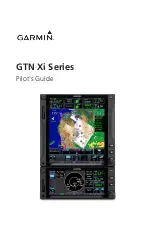
UBX-G7020 - Hardware Integration Manual
Design-in
GPS.G7-HW-10003
Objective Specification
Page 32 of 74
2.6
RF front-end
The UBX-G7020 makes use of a RF subsystem, which can receive GPS and GLONASS frequencies. However,
because of differing center frequencies the receiver has to be switched to GPS or GLONASS mode by using a
UBX message. Parallel reception of both GPS and GLONAS is not possible with the UBX-G7020.
Note that the internal LNA input requires additional matching components to be added depending on the
application. The choice of these components affects the RF noise figure and the immunity to out-of-band
interference - a major threat for every GPS/GNSS receiver. As both GPS and GLONASS operate with very small
received signal levels ranging from -120dBm to about -160dBm any out-band interferer e.g. from GSM, CDMA,
WCDMA, WiFi or Bluetooth wireless systems is tens of dB larger. If coupled into the RF front-end the wanted
GNSS signal strength will be greatly suppressed reducing the systems sensitivity. The impact is even worse for a
larger interferer adjacent to the GNSS frequency bands which may saturate the RF front-end, blocking the GNSS
signal. To suppress out-of-band interferers a SAW filters must be added to the design.
Another consequence of the weak GNSS signals is that for best performance the RF noise figure should be as
low as possible. Thus an active antenna with integral LNA can be used, or for operation with a passive antenna
an external LNA may be used in front of the GNSS chip.
The proper selection and combination of SAW filters and LNA is crucial, because filter losses can increase the RF
noise figure and the out-of-band gain of the LNA decreases the jamming immunity. In addition, the bandwidth
of the external components including antenna should match the GPS and/or GLONASS signal bandwidth. It
should be noted that a GNSS receiver, which is intended to operate with GPS and GLONASS signals must use
external RF parts designed to accept both frequency spectra. However, in a GPS only application the external
components can have a narrower bandwidth centered at 1575.42MHz. A GLONASS only application would
require external components centered at 1602MHz and a bandwidth of about 10MHz. So it might be a
challenge, especially for the antenna, to get good performance on GPS and GLONASS signals with the same
receiver.
2.6.1
General notes on interference issues
Received GPS/GNSS signal power at the antenna is very low. At the nominal received signal strength (-130dBm)
it is ~15 dB below thermal noise. Due to this fact, a GPS/GNSS receiver is susceptible to interference from nearby
RF sources of any kind. Two cases can be distinguished:
1.
Out-of-band interference:
Typically any kind of wireless communications system (e.g. GSM, CDMA,
3G, WLAN, Bluetooth, etc.) may emit its specified maximum transmit power in close proximity to the
GPS/GNSS receiving antenna, especially if such a system is integrated with the GPS/GNSS receiver. Even
at reasonable antenna selectivity, destructive power levels may reach the RF input of the GPS/GNSS
receiver. Also, larger signal interferers may generate intermodulation products inside the GPS/GNSS
receiver front-end that fall into the GPS/GNSS band and contribute to in-band interference.
2.
In-band interference:
Although the GPS/GNSS band is kept free from intentional RF signal sources by
radio-communications standards, many devices emit RF power into the GPS/GNSS band at levels much
higher than the GPS/GNSS signal itself. One reason is that the frequency band above 1 GHz is not well
regulated with regards to EMI, and even if permitted, signal levels are much higher than GPS/GNSS
signal power. Notably, all kind of digital equipment, like PCs, digital cameras, LCD screens, etc. tend to
emit a broad frequency spectrum up to several GHz of frequency. Also wireless transmitters may
generate spurious emissions that fall into GPS/GNSS band.
As an example, GSM uses power levels of up to 2W (+33 dBm). The absolute maximum power input at the RF
input of the GPS/GNSS receiver can be +15dBm. The GSM specification allows spurious emissions for GSM
transmitters of up to -36 dBm, while the GPS/GNSS signal is less than -120 dBm. By simply comparing these
numbers it is obvious that
interference issues must be seriously considered in any design of a GPS/GNSS receiver.
The Inmarsat satellite comms uplink frequency falls adjacent to the GLONASS band. Therefore it is not
recommended to integrate a GPS/GLONASS receiver and an Inmarsat terminal within the same design.
Confidential
















































